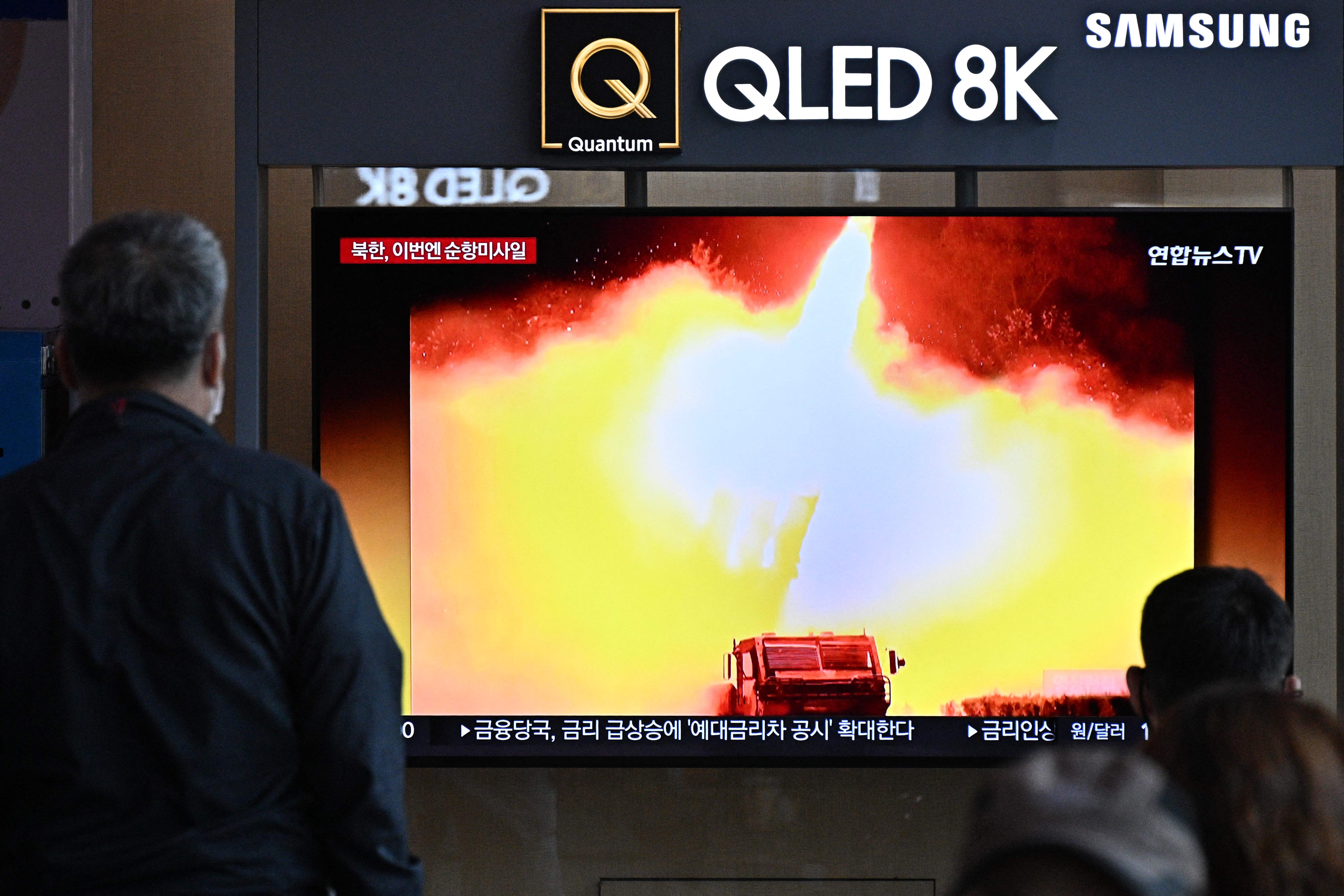North Korea fires two ballistic missiles near Japan racking up nearly 80 launches this year
At least one missile lands outside Japan’s exclusive economic zone, reports say

Your support helps us to tell the story
From reproductive rights to climate change to Big Tech, The Independent is on the ground when the story is developing. Whether it's investigating the financials of Elon Musk's pro-Trump PAC or producing our latest documentary, 'The A Word', which shines a light on the American women fighting for reproductive rights, we know how important it is to parse out the facts from the messaging.
At such a critical moment in US history, we need reporters on the ground. Your donation allows us to keep sending journalists to speak to both sides of the story.
The Independent is trusted by Americans across the entire political spectrum. And unlike many other quality news outlets, we choose not to lock Americans out of our reporting and analysis with paywalls. We believe quality journalism should be available to everyone, paid for by those who can afford it.
Your support makes all the difference.North Korea has fired two short-range ballistic missiles into eastern waters on Friday, said officials in Japan and South Korea, making its total launches this year go up to nearly 80.
The missiles were fired from Pyongyang’s Sunan area in the afternoon into the Sea of Japan, South Korea’s Joint Chiefs of Staff (JCS) said.
“Our military spotted two short-range ballistic missiles launched by North Korea into the East Sea from the Sunan area of Pyongyang at around 16:32 (0732 GMT) today,” the JCS said.
“Our military maintains a full readiness posture while closely cooperating with the US while strengthening surveillance and vigilance,” it said.
This was further confirmed by Japan’s coast guard and its prime minister’s office which detected the missile launches shortly after at 16:35.
Japan’s coast guard said the projectile fired by North Korea had already fallen and indicated that it was a short-range ballistic missile.
At least one of the missiles reportedly landed outside Japan’s exclusive economic zone (EEZ).
Prime minister Fumio Kishida’s office issued emergency instructions asking authorities to prepare for contingencies and take all possible precautions.
The PM also asked officials to ensure the safety of aircraft, vessels and other assets.
Friday’s missile launches come five days after the hermit kingdom fired two mid-range missiles, calling it an “important” test for the ongoing spy satellite programme it intends to finish by April next year.
The US and South Korea are speculating that the Kim Jong-un regime is ready to carry out its seventh nuclear test soon despite sanctions and international condemnation, while Pyongyang has accused Washington and Seoul of aggression against it and warned of a serious retaliation.
North Korea has steadily moved ahead with enhancing its military muscle in the category of missiles and related technologies.
Last week, Mr Kim oversaw the test launch of a “high-thrust solid-fuel motor” — considered to be a key component for North Korea’s intercontinental ballistic missiles (ICBMs) and a new strategic weapon in its military arsenal, state media said.
The successful launch of “high-thrust solid-fuel motor” could give North Korea an impetus to develop a more mobile, harder-to-detect arsenal of ICBMs that pose a direct threat to the US.
This was the first of its kind launch of a “static firing test” of a missile engine carried out in the country’s northwest rocket launch facility, reported the official Korean Central News Agency.
Additionally, the US and South Korea carried out a joint training near the Korean peninsula and flew nuclear-capable bombers and advanced stealth jets on Tuesday this week, ratcheting up tensions in Pyongyang.
Seoul defended the drills by calling it a part of a bilateral agreement on boosting a US commitment to defend it with all available military and nuclear capabilities.
North Korea has labeled such military exercises by the US and South as a rehearsal for invasion.
Join our commenting forum
Join thought-provoking conversations, follow other Independent readers and see their replies
Comments